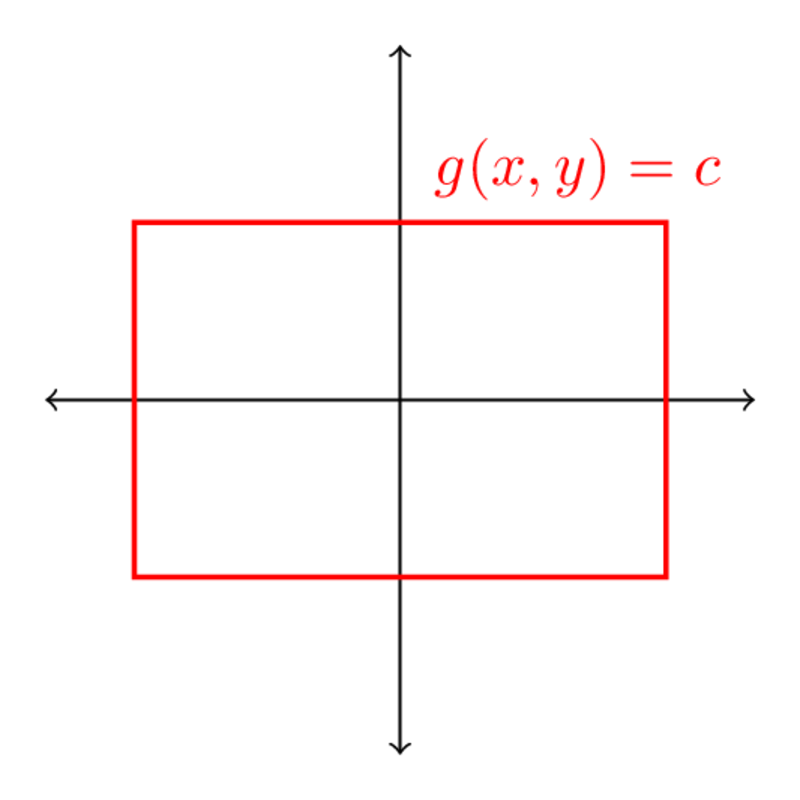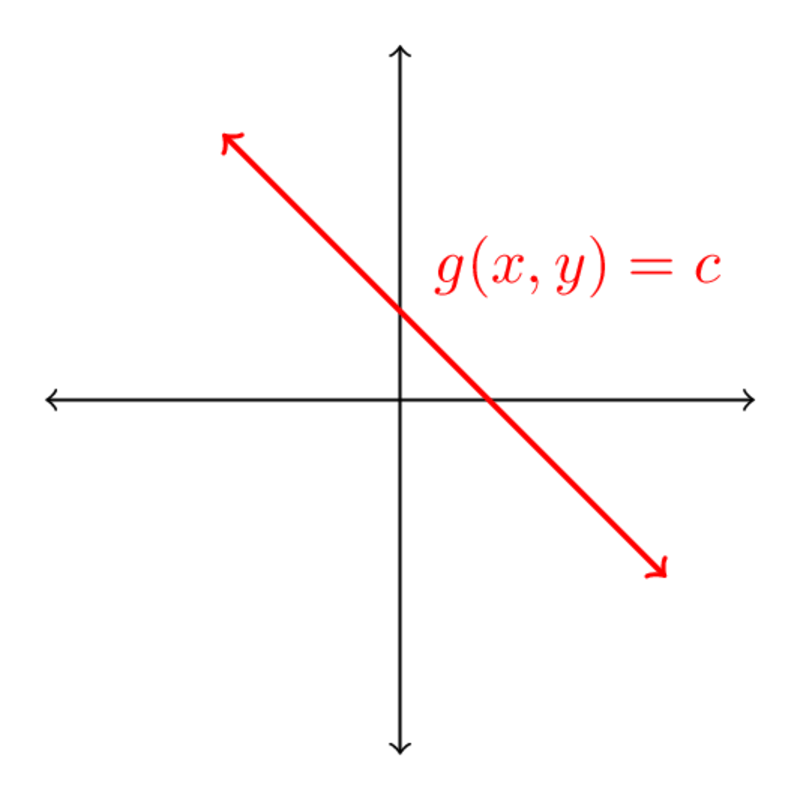Week 10 Discussion Notes
Table of Contents
Lagrange Multipliers
The setup is this: we want to optimize a function subject to some constraint . In other words, we want to maximize and minimize , where lives on a level curve.
With this setup, the critical points are the points that satisfy the Lagrange multiplier equation
or points where don't exist.
There is a technicality with this, though. If there are a global max and global min, then they have to satisfy the equation. But sometimes, you don't have a global max or a global min, so you need to have an idea of what extrema there are.
Bounded Constraints
If your constraint is bounded, then there will always be both a global min and a global max.

Unbounded Constraints
If your constraint is unbounded, then there's a chance that you don't have a global min or max. In this case, you'll have to figure out if you have any based on what and are.

Example 1.
Optimize subject to .
Solution.
For this problem, the constraint is unbounded because it's a line. If and are large (either large positive numbers or large negative numbers), then will also become very large. This tells you that doesn't have a maximum. You can prove it like this: you can solve the constraint for to get
Plugging this into , you get
Then
In this situation, you still get a global minimum, so we can try the Lagrange multiplier equation. The gradients are
so the equation is
The first coordinate gives us , and the second coordinate gives us . Plugging this into the constraint,
Thus, is our critical point. Since there's a global minimum, it must be a critical point, and since there's only one critical point, this means that the minimum is